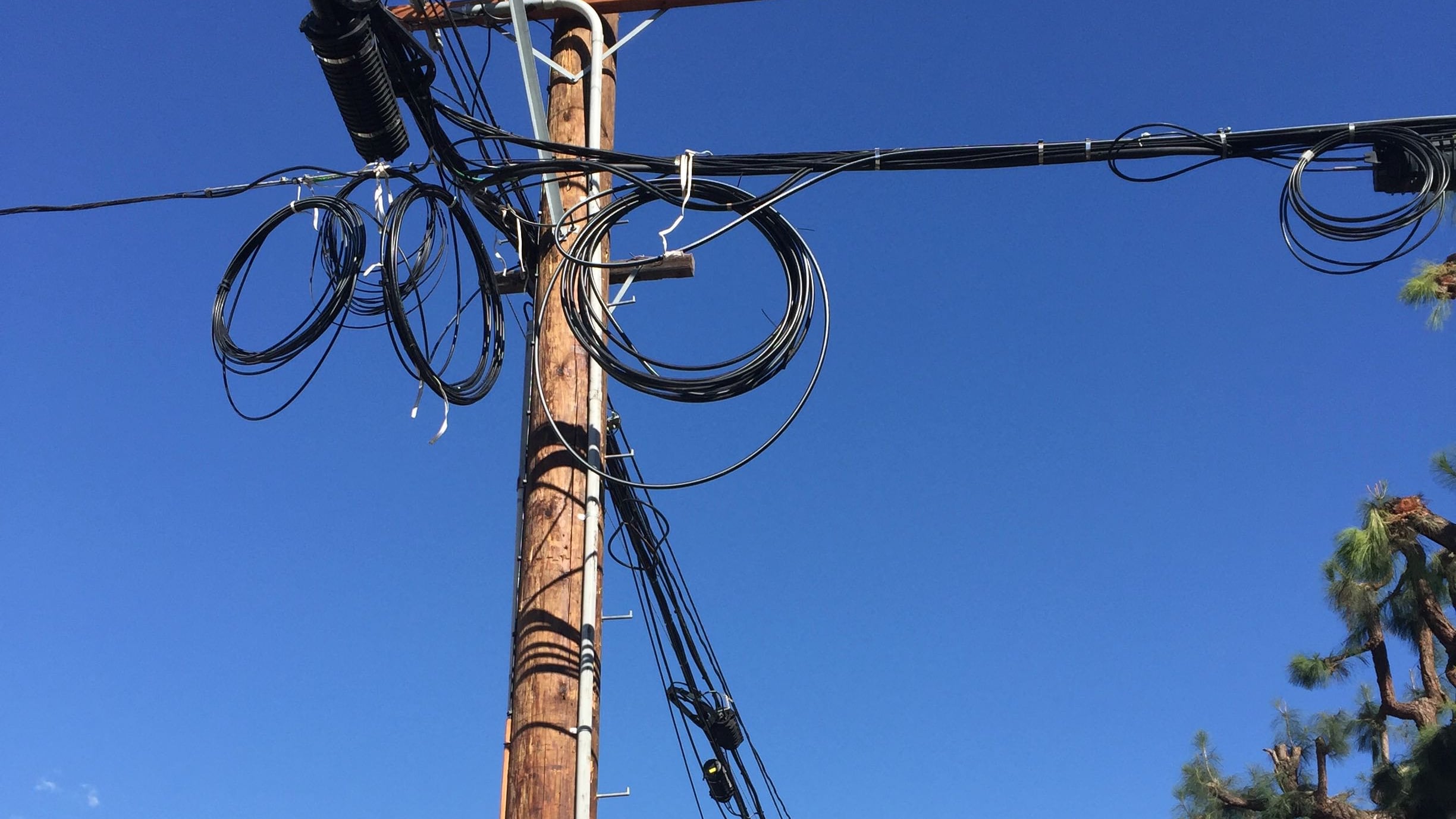Lately I’ve been seeing big, heavy-looking coils of extra power lines hanging off some power poles around Portland. Is PGE preparing for large chasms to open between specific poles around town, or some other emergency that the rest of us don’t yet see coming? —Ockham’s Razor Wire
If, instead of wasting your time with “friends” and “relationships,” you spent your Saturday nights like I do, drinking gin out of a plastic bottle and reading Electrical Contractor magazine, you’d know that those coiled-up cables aren’t power lines at all—they’re fiber optic service loops.
Fiber networks are experiencing explosive growth, as every company that used to move data through old-fashioned copper wires (using that dowdy relic, “electricity”) rushes to replace them with sleek fiber optic cables carrying beams of pure energy.
Each of those cables may contain up to 160 individual light-conducting fibers. Luckily, splicing them together is no problem—inexpensive, easy-to-use machines automatically and unerringly connect each fiber to its counterpart in the next cable with a single click.
Nah, I’m just kidding. Actually, every splice is a nightmare—somebody has to strip each individual fiber down to its one-third-of-a-millimeter-wide glass core (by hand) and painstakingly fuse it to the correct fiber on the other cable. Lather, rinse, repeat. The closest thing they have to an easy-to-use machine is a big plastic tray with channels in it to help you try to keep track of the dozens of individual strands.
Now, imagine you just finished stringing one of these cables only to have a drunken, relevance-starved Charlie Sheen drive his Hummer into a utility pole, damaging a portion of the cable. That’s a real bummer, since splicing in a new section requires you to go through the whole fussy process twice. If only there were some extra cable on one side of the gap that you could just extend out to meet the other piece, so you only had to make one splice!
This is just one scenario where a service loop—a few extra yards of inline cable, neatly coiled and put aside until it’s needed—comes in handy. In a sense, Ockham, your intuition about the loops being there to bridge chasms as yet unimagined was correct. Of course, if someone really does open a spacetime rift to the Upsidedown in our reality, no one will see it coming. (Except, perhaps, readers of Electrical Contractor magazine.)
Questions? Send them to dr.know@wweek.com.
